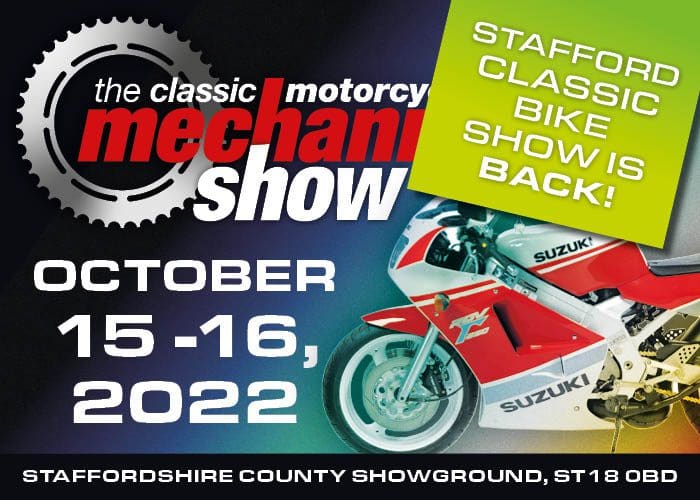Our Scoop is in a hurry to forget the modern Ducati Scramblers. He says you should ride the real deal – the Ducati 350 SCR.
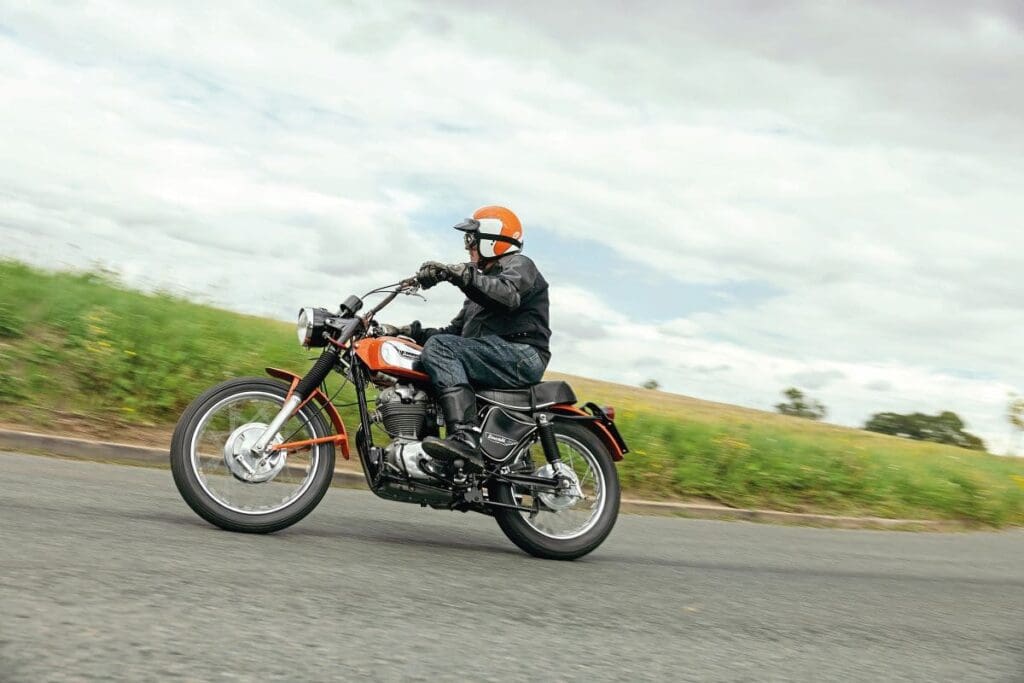
Words: Steve Cooper Pics: Gary Chapman
More by happenstance than design I seem to have stumbled across the curious delights of big singles recently and especially those of the classic variety.
It started off with the desultory purchase of my Suzuki Apache. Then it morphed into that curious amalgamation of spare TS400 motor in a Ducati GTV chassis, and now I’ve been looking wistfully at Yamaha’s SR500 and SRX600 of late. There’s a purity to a single-cylinder motorcycle that simply isn’t there when another pot is added. Yes, okay, most of us are fully aware the concept’s limitations, its faults and foibles, but fans of the ‘one-lunger’ are still legion. Once you’ve got the bug, you are truly smitten, apparently.
So, perhaps it’s no real surprise I’ve landed on another of the genre to road test for CMM. And yet this isn’t your run-of-the-mill one-pot marvel, this is arguably one of the best designed and splendidly engineered of the breed. Cue Santana music: ‘This isn’t just any four-stroke single – this is a Ducati four-stroke single!’
And what’s more it’s the one most Ducatisti will tell you is the most rounded and practical – the 350. With more oomph than the 250 and a less fussy nature than the 450, considered opinion says this is the one to have as a practical Bologna classic mono-cylinder. And for those who obsess that a Ducati is only worth having if it has a Desmo cylinder, sorry to disappoint but the 350 SCR relies on good old-fashioned springs to manage the valves. Mechanical opening and closing via the much-vaunted desmodromic top-end really only comes into its own when the revs need to be maxed out. As this bike is supposed to have on- and off-road abilities, ultimate performance wasn’t part of the build specification. However, it still retains those iconic bevel drives from the crank-end to the camshaft with that tell-tale tunnel and duo for drain tubes.
Our example is from 1970, two years in from the model’s introduction, and runs the later ‘wide case’ motors. As he was concerned about increasing the power output of his earlier ‘narrow case’ singles, Ing. Fabio Taglioni substantially revised the motor’s design to improve its strength and reliability.
So what we have here is very possibly one of the best of its type and, arguably, the more cost-effective version of the 350. Ducati singles are rarely cheap but when you know that a 350 Desmo Sport will readily set you back £15,000 to £18,000 then the £9000 our test bike was up for seems rather reasonable.
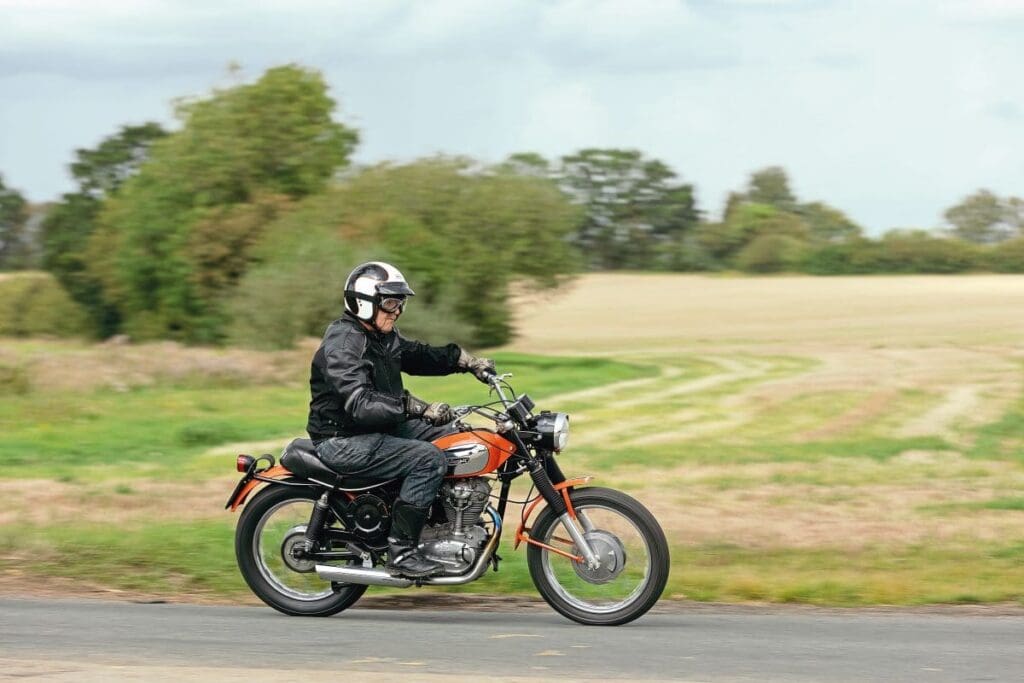
If your point of reference is Japanese motorcycles in general and dual-purpose bikes in particular, then the SCR 350 will disabuse you of such luxurious notions in a trice. The Ducati is a motorcycle designed in the late 1960s, built by a firm whose primary passion was engineering and targeted at Americans who wanted to emulate their desert sled riding heroes. That’s not to say the Ducati is primitive, unrefined or compromised – rather it was built to an entirely different metric; it’s functional, purposeful and frippery free. In essence, the bike in camera is what BSA’s later singles could have been but for a profound lack of investment, tooling and foresight.
Italian bikes are as much about style as they are anything else so the aesthetic proportions have to work or it’s figuratively a non-starter. So that front guard might look wrong at first glance but the huge clearance is there to stop mud and flora from building up. Practicality was also on the job sheet so the suspension both ends are shielded from dust and grit via substantial rubber gaiters. Ducati reckoned there was no need for any form of frame cover on the right-hand side so the air-filter case stands out as bold as brass and thereby readily accessed.
On the opposite side there’s a zip-accessed vinyl tool bag for off-road essentials, maybe some tyre levers, a pair of tubes and the like. The rear-light-cum-licence-plate mount is made from a huge block of rubber sheet aimed at absorbing engine vibrations and the undoubted hammering the bike would receive from rough terrain. And check out the mad lock stops on the bottom yoke: two of the world’s longest acorn nuts prevent the forks from making contact with the tank.
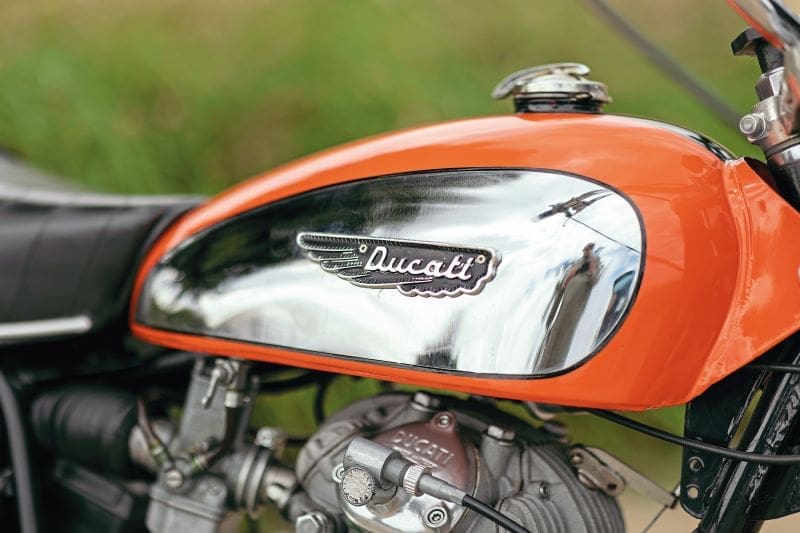
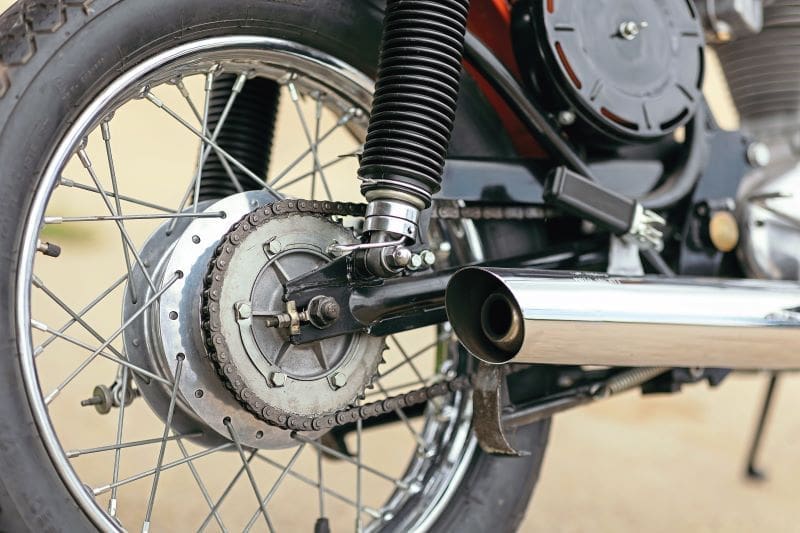
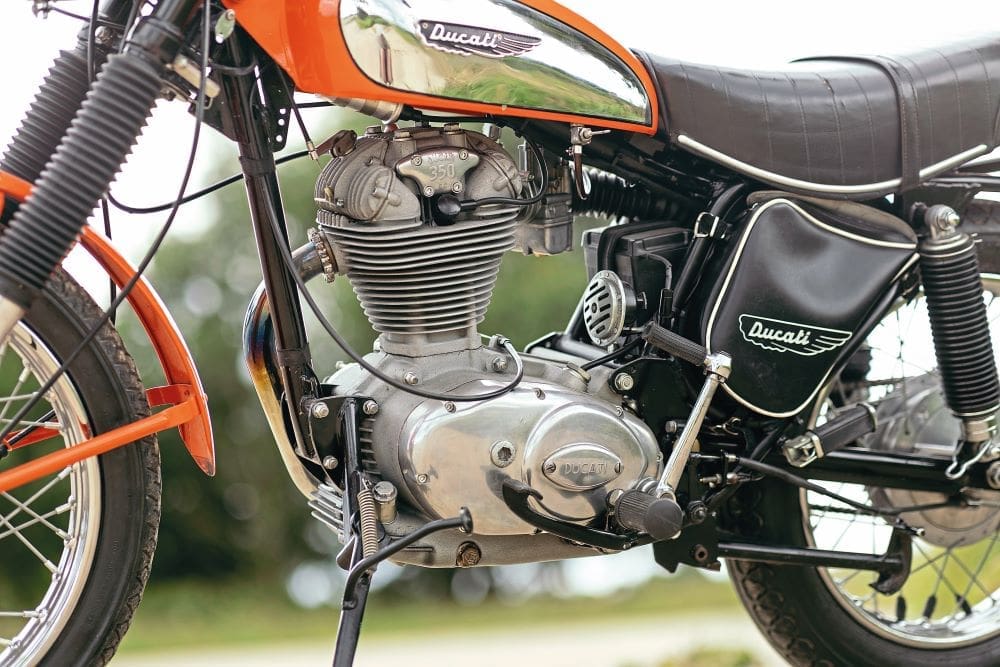
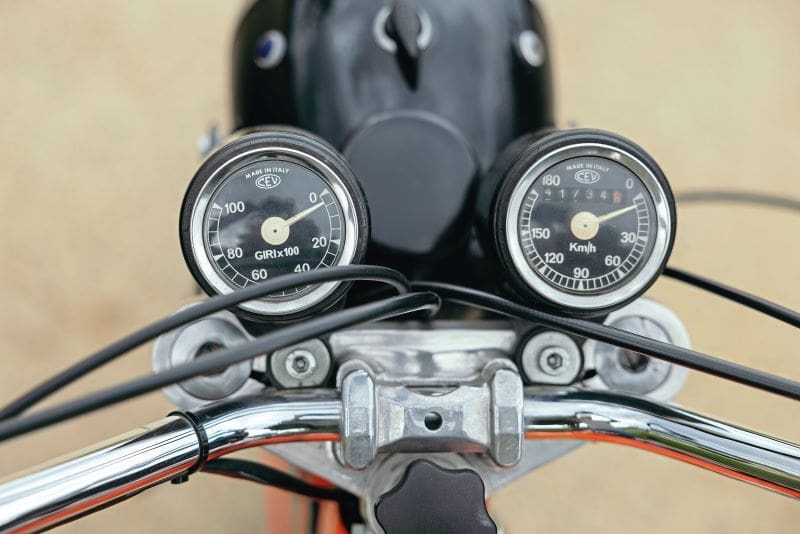
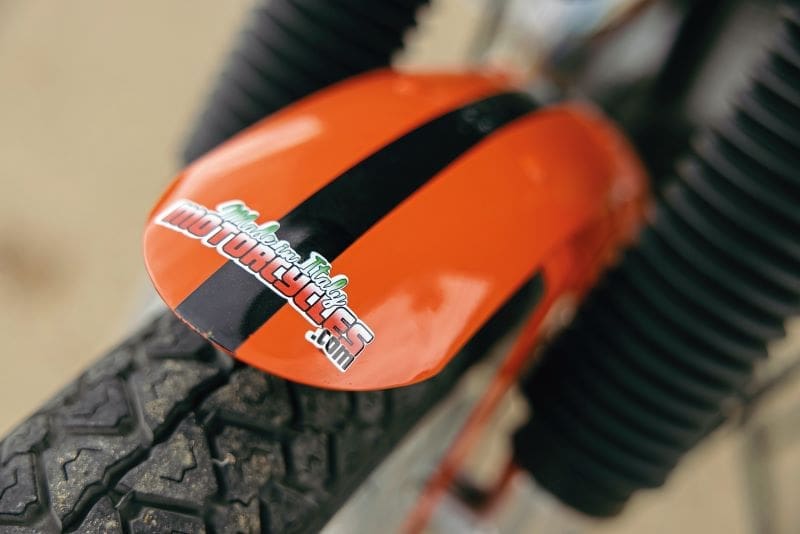
Bright orange paint and chrome were the order of day here and it’s a combination that still looks good today with that black stripe down the centre of the tank. As can be the case with Italian motorcycles form sometimes takes over from function and here the low-slung silencer stands out as a prime example. It wouldn’t have been difficult to raise it up at an angle or even have routed it high-level, but no, the boys at Bologna ran it parallel to the ground where it would almost certainly have taken a hit, but why? And strangely for a machine with some off-road aspirations there’s no sump-guard either which would surely make that large alloy crankcase extremely vulnerable?
Getting one of these bikes fired up requires a little forethought and planning. If the engine is cold you’ll be needing choke and with a 9.5:1 compression ratio you’re likely to need some help getting that piston to dance the jig. Ducati thoughtfully provided a decompressor lever, aka valve-lifter. For those not familiar with such a device, a lever pulls on a cable connected to a mechanism in the cylinder head which eases the exhaust valve off its seat slightly. This arrangement effectively ‘bleeds’ some compression out of the cylinder, allowing the rider to ease the piston past TDC (top dead centre). If The Gods of Combustion permit it, a good swing on the kick-start lever has the engine burbling away. Oh, and to add to the entertainment that kick-start lever is on the left side of the motor. With some heat in the engine it’s now time to negotiate with the right-side gear change which is a heel-and-toe device whose operation is further compounded by a one up/four down change pattern. Not too surprisingly, changing gears takes a fair bit of getting used to. That gear lever with its twin ends is unquestionably a strange thing to fit to something as obviously focussed as a Ducati Scrambler. These devices are said to have come out of Italy in the early 1950s and were specifically designed so that fashion-conscious Latins never got a blemish on their pristine period suede loafers. So why they were a standard fitment here is anyone’s guess!
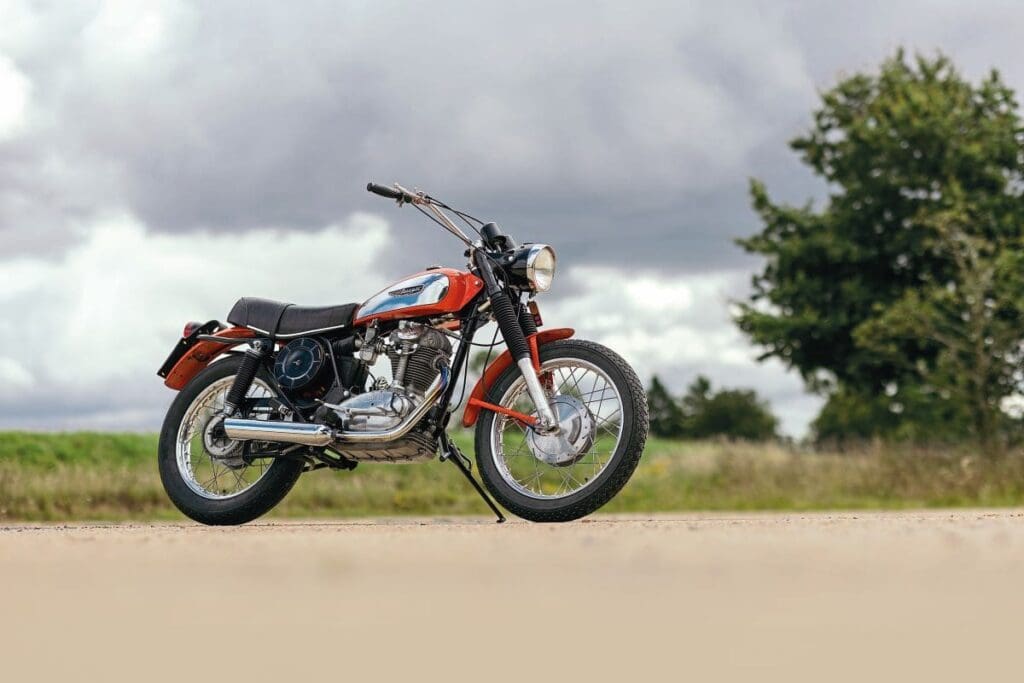
The ride is significantly unlike pretty much anything else you’ve ridden. The handling is so light and easy going yet it’s never flighty or unpredictable. The wide bars give you loads of leverage but you’re not hung out in the breeze with them and they remain comfortable for the speeds the bike is capable of. My notes of the day make absolutely no reference to the suspension, which reassures me neither end gave a moment’s concern or worry. The 350 SCR tracks beautifully and almost thinks its own way around bends and corners.
The ME77 Metzelers complement the chassis whilst managing to look period at the same time. For me, tyre tread pattern and appearance rank much lower than grip and performance, but with the rubber fitted here it’s very much a win-win. The bevel-drive motor has ample torque and once you finally get used to that gear change pattern and the bonkers lever it’s easy to exploit the five-speed box and its widely-spaced gearing.
The seat is more than adequate but you’d not want ride too far two-up; the bars and pegs set you reasonably far back so you’d have to adopt a compromised stance with a passenger on board. Given the bike’s intended purpose (i.e. some pretence of off-road or trail riding) you’d argue it’s not really a problem.
What might have been then and undoubtedly now will be the exhaust’s bark – you’ll not make any friends if you pilot a 350 SCR on a green lane today. From a rider’s perspective the notes the short, stubby, slash-cut tube make are a truly glorious delight, but your average rambler won’t be of the same opinion, believe me! Think any period British single and you won’t be too far away in note, bark, tone and decibels.
In a world of ventilated discs, radial calipers and ABS, the Ducati’s brakes are decidedly from the 50s and 60s but, fortunately, they’re much better than they look. Basic SLS (single leading shoe) they may be, but their designers got the various levers, fulcrums and pivots bang on. You’d not want be carrying out emergency stops from its 80mph potential repeatedly on the Ducati single but for everything else they’re dependable and predicable.
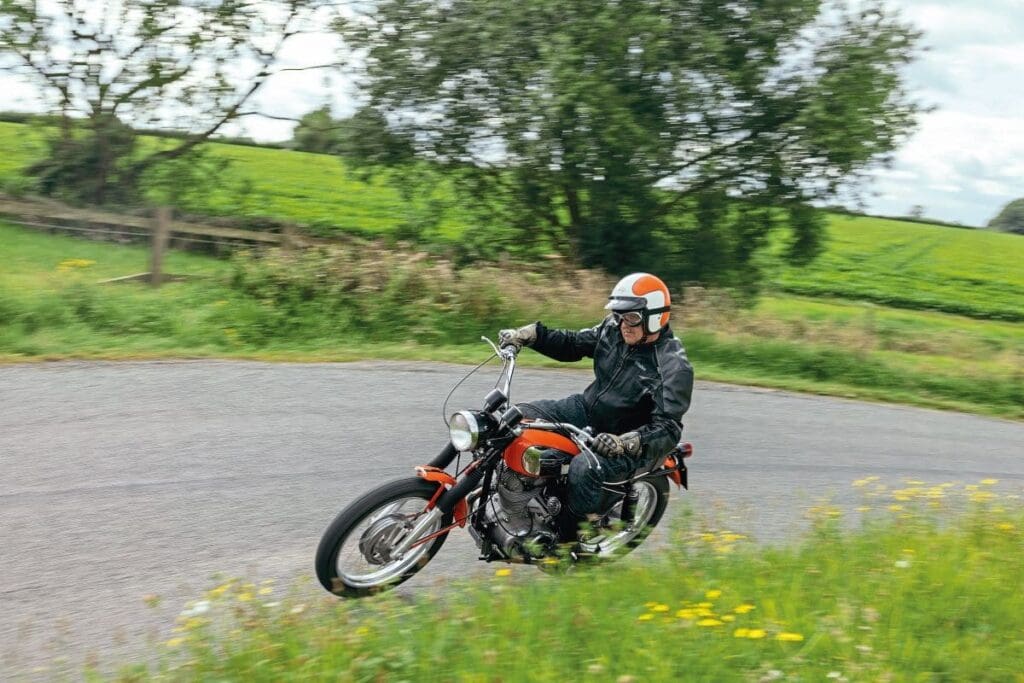
Ultimately the Ducati 350 SCR is one of those machines that somehow manages to be greater than the sum of its parts. It’s also packed with some strange features – just look at that crazy side-stand as a prime example. If you approach the bike using clinical logic it probably doesn’t make sense… but that applies to other bikes I’ve ridden, too.
What you get with one of these period Dukes is an engineer’s purest vision of how a 350 single should be allied to a marketing department’s take on maximising the potential sales of what was originally a road bike.
The peppy motor, the cracking chassis and the Italian style combine to deliver a genuinely involving motorcycle. Okay, so it’s not exactly cheap but then again quality never is! cmm
Thanks to
Made in Italy Motorcycles
(www.madeinitalymotorcycles.com) 01449 612900
Ducati 350 Genealogy
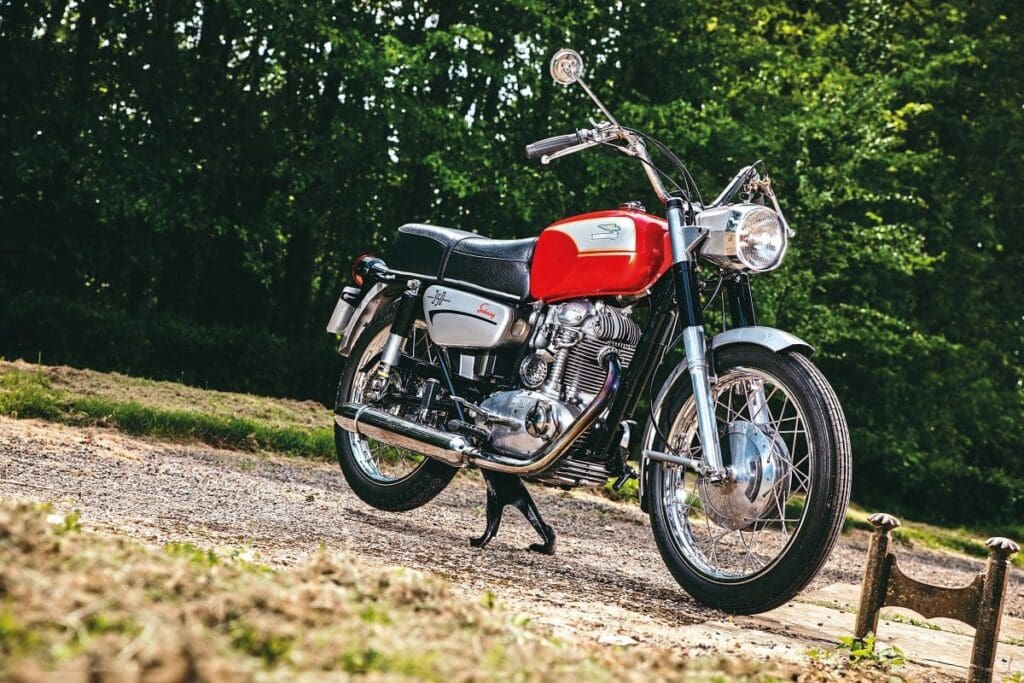
Officially there was no 350 Ducati single until 1965, but American Frank Scurria had constructed one based on the smaller engines back in 1963.
Spurred on by importers Berliner, Taglioni created the racing 350 SC which soon morphed into the ‘narrow case’ Sebring – road tested back in January 2019 here in CMM. Three years later with the engine cases upgraded to boost reliability, the new 350 motor was variously offered in valve spring and Desmodromic formats.
Across a range of chassis types and styles (street and scrambler) the 350 was uprated and changed as fashions came and went. The iconic 71/72 350 Desmo Silver Shotgun – semi-officially the Silver Bullet – laid down a profile that would foment the firm’s sporting credentials that run to this day. By the mid-1970s it was obvious the Ducati singles were no longer cutting-edge.
Anachronistic compared to the Japanese offerings with a design based on 1950s engineering, the 350 and its siblings were simply of another era and increasingly costly to produce. Despite this, the final one-lung Ducatis struggled on until 1978, selling to an ever-diminishing customer base before being axed. They’d become increasingly irrelevant in a world of multi-cylinder machinery, yet the 350 in particular had played a key role. Its basic architecture and engineering had formed the basis of the superb, game-changing, 750GT L-twin as early as 1969.
The Dealer’s Perspective –Neil Ridgewell of Made in Italy Motorcycles
“These 350 SCRs are cracking bikes and very reliable. The ball bearing mains and roller bearing bottom-end are really robust, only requiring regular oil changes – either straight SAE 40 or 50. Despite the myths, the switch gear works fine decades on and just requires an occasional clean and lubrication; the lights are often slighted buy they, too, are more than fit for purpose. The gauges aren’t the horrors some would have you believe either. The ignitions can be 6-volt points or 12-volt CDI; it’s likely both may need replacement at this age. Fortunately, Nigel Lacey sells a modern system made by Electrex World that brings everything bang up-to-date. The only other issue is the carburettor which can suffer from slide wear leading to poor running and erratic tick-over. Eurocarb offer a modern Dell’Orto unit that looks very similar to the original and immediately restores the fuelling. Just make sure you use the correct mineral oil at service time and it’ll keep on running fine.”
SPECIFICATION
Engine type: 340cc air-cooled, four-stroke, SOHC 2-valve, single
Bore and Stroke: 76.0mm x 75mm
Claimed Horsepower: 24bhp @ 8500rpm
Maximum Torque: N/A
Transmission type: 5 speed
Compression ratio: 9.5:1
Carburation: Dell’Orto VHB29
Tyres: 3.50 – 19 (F) 4.00-18 (R)
Fuel Capacity: 2.4 gallons (11.0 litres)
Brakes: SLS drum (F) & (R)
Dry weight: 143kg (315lb)




